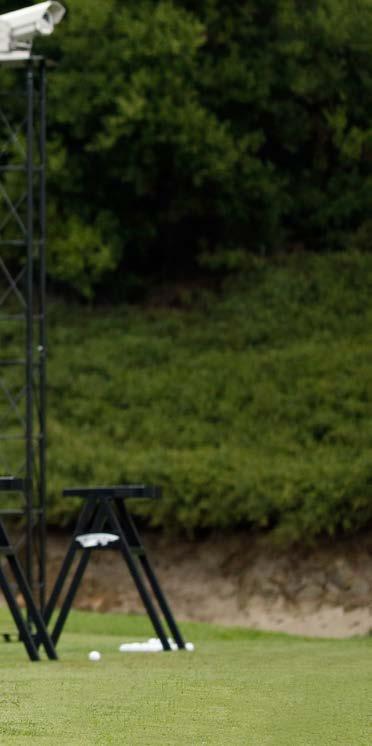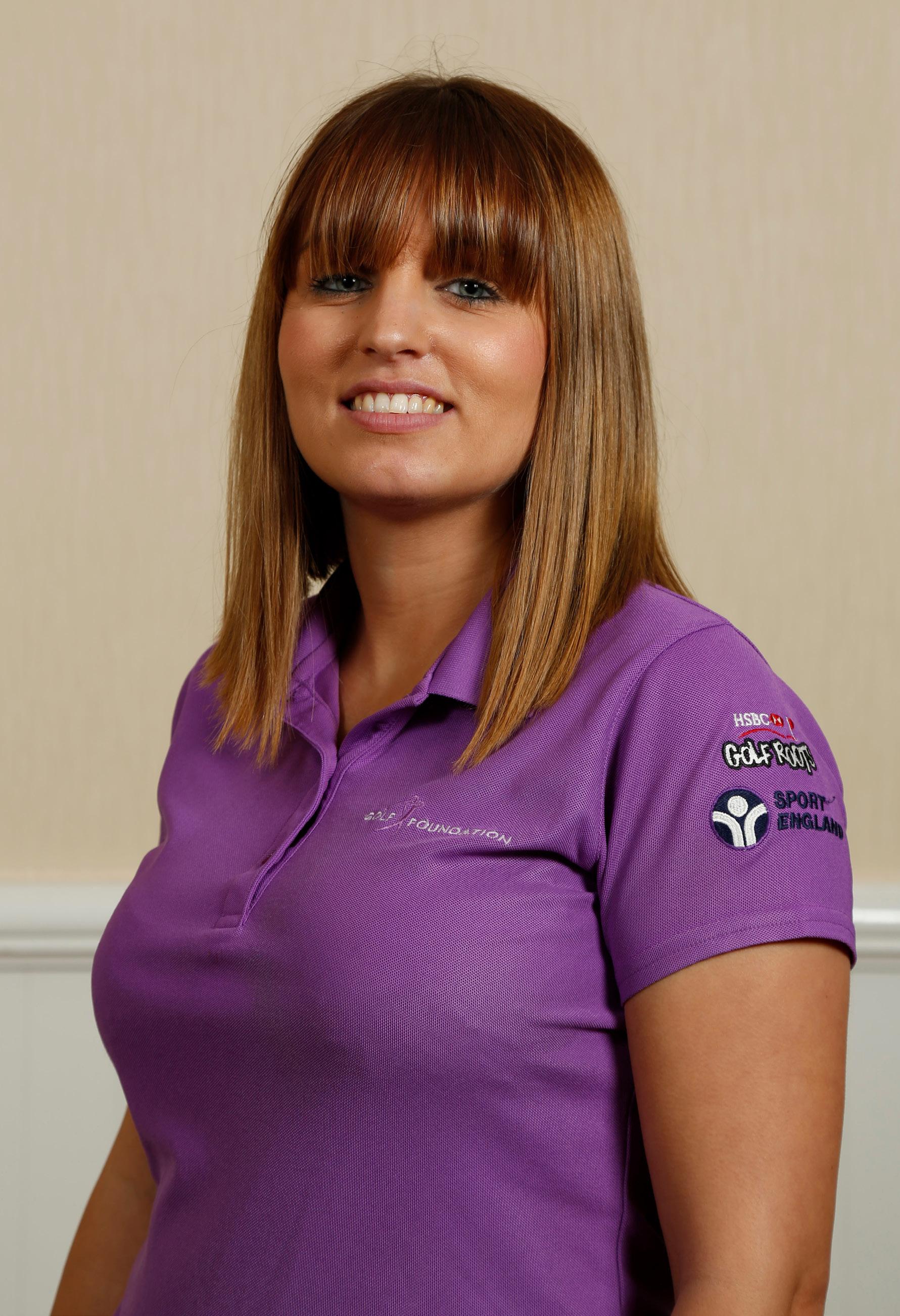
23 minute read
Minding the gap when it comes to committees
Mind the GAP
The relationship between a manager and the committee or board can define the success of the whole club. Industry expert Kevin Fish explains how you can make it a successful one
Advertisement
Governance is the hot potato that no club manager can ignore. In fact, it perhaps affects their enjoyment of their job, and their career prospects, more than any other area of operations.
Few know more about the ways of club committees and boards and how to handle them than long-time GCMA member Kevin Fish.
Consistently rated by delegates as a stand out speaker at last year’s National Conference, his success at Cotswold Water Park was forged by three revealing sessions on the fundamentals of club governance.
He’s since been delving deeper, carrying out further analysis on a subject that’s only grown in importance this year with the coronavirus pandemic and the way it has affected clubs.
We asked him to reveal his findings…
You have been diving deeper in to club governance – what have you learned? Our research has shown that the average tenure of a golf club manager in the UK is just over four years. And while the primary reason given by a club manager for moving on is their own desire to change clubs to further their career, a quarter (23%) of managers admit they were “nudged out” of their jobs.
A further 21% describe that departure as “through mutual agreement”. When added together, this data tells us that when things got tough at the club, for whatever reason, almost half (44%) of managers were not on the same page as their Board members.
These statistics are consistent with studies in other countries and simply reinforce the importance of managers being able to work with, and not against, their Committee.
What is at play here? I have seen club governance up close from every angle and know what an incredibly challenging working environment this can be. I firmly believe there are two key aspects to being successful in getting long-term, sustainable, results in and around the boardroom.
Firstly, as club managers we must be able to demonstrate consistently high levels of emotional agility. I would define that as being sufficiently aware of our own emotional reactors, in order to manage our behaviours, to best achieve our goals and values. Quite a mouthful to get your head around, but we recognise it when we see it, and it’s clearer still when that skill is missing. Just think of a busy Christmas period with the extended family and the in-laws and you will know the skillset I am describing!
The second key factor for longterm success as a club manager is to surround yourself with a Committee full of well-intentioned, passionate volunteers who are highly trained in the unique world of private golf clubs.
And in the real-world Kevin… OK, I admit, getting just two out of three of those is as much as we can hope for. Whilst most of us can relate to the passion and positive intentions of the Committee Members we serve, I suspect that the one area where we might, just might, fall down, is that last element – highly trained in the unique world of private golf clubs.
In the absence of a Swiss finishing school to train our Committee members we are often left with people who are undoubtedly experience rich, but sadly, theory poor. This makes for frustrating periods where the newcomers to the board room are getting up to speed on how things work in a golf club. Worse still, some newcomers arrive with a single item agenda, perhaps
representing the views of a vocal minority. You, as the experienced manager, may skilfully win that particular battle with the new Board member, but you know that this victory comes at a cost and you have, in effect, laid the foundations to potentially lose the war.
Haven’t club managers always had this problem working with committees? Yes, and I must confess that people like me may have even inadvertently played a part in making the problem
worse. Let me explain. For the last decade we have raised the profile and the importance of club governance in this country, ensuring that it is thoroughly understood and introduced to the board room by the many managers who have attended governance training and workshops.
It is possible that, by doing so, we have widened the gap between the knowledge level and expectations of our club managers and the knowledge level of the Board members who have been left behind.
With more clubs fighting for fewer members these days, the boardroom practices and behaviours that could be accommodated during the boom years of golf simply are not enough in today’s competitive environment. Frustratingly, the well-meaning club managers who try to highlight these deficiencies are rarely thanked with a pay-rise.
What I can say with certainty is that after every governance workshop I deliver for club managers, the most common
piece of feedback I receive from delegates is “I wish my Committee had been here to hear that, Kevin.”
So what we are saying is that the knowledge gap is wider now… Yes, and that gap is sadly one that many a great club manager has fallen through, sometimes never to be seen again. This summer’s circumstances have given us all a lot of time to reflect, and I am sorry to say that, in some cases, this has resulted in a few managers choosing to call it a day. The reason

given to me by those managers is predominantly that they just cannot raise their game again, to deal with the perennial problem of nurturing their committee to do the right things right.
So what are those perennial problems Kevin? I was a club manager for nearly 10 years, and also a Board chairman for six, so I have seen it from both sides. I have also conducted research with both club managers and club chairmen/chairwomen and can reveal what they believe to be the key governance challenges.
The nine governance challenges in private clubs – (CCL Research 2020)
1. 2.
3. 4.
5. Committees are too big Lack of follow through by volunteers Absence of a plan for the club Micro management of the manager by the board Lengthy and ineffective meetings
6.
7.
8.
9. Personal agendas (vocal minority) in the board room Finding suitable volunteers to be a part of this Consistency of mission/ Continuity of direction Resistance to change (despite points 1-8)
Is there any good news? Strangely enough, yes. Many of the managers reading this will confirm that the circumstances clubs have found themselves in this summer has resulted in a “can-do” or “must-do” attitude. For example Boards have:

Moved swiftly to embrace virtual meetings
Communicated frequently and honestly with the members on the changing landscape
Switched on with laser focus to what members need from their club right now
Extended terms of office bearers for continuity of club business and activities
Rapidly updated byelaws to permit on-line voting to conduct the essential affairs of the club.
To underline that, we know from our governance survey of club managers that three quarters (75%) describe their committee support as more positive this year, with nearly half (40%) describing committee support as excellent.
The older readers of this magazine will remember the cartoon series about the Trumpton Fire Brigade, who came together every month to practice but never did much more than rescue
the odd cat. Well it feels like the equivalent at our clubs just showed they really can put a fire out when they need to - and we need to embrace and build on that momentum.
So how do we do that? I am happy to share all of my survey findings with GCMA members who contact me, and there are some easy wins which I can share below.
The average size of a golf Club Committee is 10.2 (Yes, I know you are now picturing your own 0.2 of
Over half (53%) describe the number on their Committee as “too high”
Respondents only change their answer to “about the right number” when that number drops to eight.
The average time for a regular committee meeting is around 120 minutes and is understandably described as “too long” until clubs reach 90 minutes or less.
The percentage of clubs who offer no training or induction at all for their incoming board members – 46%
Let us reflect on that last statistic. Almost half of our club managers acknowledge that their new board members undertake no induction or training before they attend their first board meeting. I think we may have found somewhere to start to address the situation and begin to close the gap. This is the gap that many good managers have fallen down, often without ever knowing there was a hand against their back ready to give the final push.
I have dedicated much of the last 15 years of my career and volunteer time helping to professionalise our industry and have now arrived at the point where I believe the greatest impact I can have is to help club managers to close the gap.
How can you help Managers to close that gap? In creating the solution, a picture came in to my head of going to my first Newcastle United match with my Dad. Nobody handed out a song sheet on the way in. Football fans rely on a form of osmosis to pick up the words to the songs and sure enough, after a few visits, it seems to work just well enough to let us join in and play our part in doing things the way they have always been done.
Running your golf club is far too important to rely on our own form of osmosis, and if this article tells you anything it is that we do not really want things to be done the way they have always been done.
One very helpful solution is to create an annual induction day for your Board members. Less than one in 20 clubs offer their Boards an induction day, although it is interesting to note that these events have been embraced by clubs in the high tier of the industry more than elsewhere.
One new option now available to you is the result of my work this summer. I have applied my 20 years of theory and practice on this subject, to create a new tool that helps all clubs to “close the gap” in and around the boardroom. It is an interactive support tool for Board members that will dramatically improve their understanding and, therefore, performance.
Most importantly, it protects club managers from risking their own relationships by talking about the elephant in the room.
Board members have earned our respect during this lockdown crisis. I strongly recommend that managers build on this momentum in the board room. If I can help fellow members to close the gap and, in doing so, enhance your career fulfilment, I would be delighted to help you, to help your club.
To find out more, contact Kevin Fish CCM at Contemporary Club Leadership at kevin@ccl.services or visit www.ccl.services
Yamaha is delighted to introduce the YamaTrack® - a complete golf course management system featuring GPS to improve user experience. Made specifically for golf course managers, the enhanced tracking and control, with geofencing software on board the golf carts, improve the course’s performance and efficiency.
All of the modern golfer’s needs will be catered for with YamaTrack®, which features a 10” interactive touchscreen including 3D terrain graphics, accurate distances, messaging and pro tips. The hardware will be installed by the course’s local dealers, which will then be accessed through the owner’s online Yamaha account for fleet and individual car control, as well as to activate the Player App.
The car control comes with a range of features, focusing on safety, efficiency, and user experience. Unlimited geo-zones control the car’s speed and position on the course, while the tracking feature can also show its current location or history. The shutdown feature provides better overnight security and prevents the car’s entering ‘prohibited zones’ by day.
Managers can monitor the pace of play, scheduling rounds and directing the course marshals to maximize efficiency, with the ability to also oversee each car’s battery life and conditions via the app to improve fleet rotation.
Included in the 10” screen options are customizable onscreen advertising, allowing courses to increase their revenues through shared advertising opportunities.
These would be distributed across the fleet from the app, which will also generate multiple reports to improve management and maintenance.
Customer experience is key, and the Player App gives users an easy way to navigate their way through each round of the course, from tee to green, with an accurate distance to pin feature that’s sure to help improve their handicap and allround experience, increasing the course’s reputation.
Food and beverage menus can be uploaded to the app, with players able to order what they’d like before their final putt. The course’s brand can be
represented through the app’s

personalization features by adding its logo.
The YamaTrack® will be available at selected Yamaha dealers within 2020.
For more information, please contact Dan Palmer on 01932 358000 or at dan.palmer@yamahamotor.co.uk.
Fairway Credit The trusted payment solution provider for the GCMA, its’ members and their clubs, helping golfers finance their annual membership fees...
The importance of increasing golf club membership by offering a monthly payment option to spread the costs of membership can help secure future growth.
COVID-19 has had a significant impact on many aspects of life, with social distancing and restrictions on movement resulting in a complete overhaul in the way people have engaged with leisure. Like the experience of many businesses, golf clubs haven’t escaped the impact of the pandemic with financial performance under severe pressure during the year.
To the relief of both clubs and players, golf was one of the first sports to formally return following lockdown. This accessibility created renewed interest and a spike in membership take up, but how can golf clubs maintain and grow this vital cash flow from membership fees?

Roger Brown, Chief Commercial Officer, Fairway Credit
explains how a monthly payment option to spread the costs of membership is increasingly popular amongst golfers, turning a single lumpy payment into a more manageable and convenient monthly amount whilst providing fees upfront in one payment to the golf club. There is also an added benefit with the opportunity for the club to earn commission.
Emerging from lockdown
With the ever-changing landscape of guidance being given by the government, from limiting people to one outdoor activity a day and only with members of their own household, to regional lockdowns, it’s uncomfortable to recall that the majority of sports and exercise activities became impossible overnight when lockdown measures were first introduced – golf included. Thankfully, as a leisure activity enjoyed in the outdoors and a sport famous for players’ self-regulation, adhering to rules and regulations, we were all pleased to see golf make a quick and early return following lockdown. Golf clubs were rapidly made into a safe environment for players to frequent once again (albeit in a limited way) and long may it continue. To the relief of club management and the delight of members, golf clubs up and down the country welcomed back existing and new members in July bringing in much needed revenue.
Membership levels
For a moment let’s look at levels of membership in recent years pre COVID-19. It’s not all been good news. Golf club membership levels were in general decline for a number of years. According to the KPMG Golf Participation Report for Europe 2019, England, which has the largest number of registered golfers in Europe, lost 10,688 (1.63%) of its registered players between 2017 and 2018. The total number fell from 655,839 to 645,151. Figures from Scotland and Wales were worse with Ireland’s figures more stable.
More recent statistics provide a more positive picture. The number of members’ clubs reporting growth in 2019 was 53 percent. The average level of growth was six per cent.* Once 2020 reporting is available it will be interesting to see the full extent of the positive spike in numbers playing and membership levels in general in this post pandemic era.
Despite this recent growth it’s going to be challenging for those in charge of golf club finances. A new survey of UK private members’ golf clubs** finds 37 percent have cash flow issues, even with the recent boost in playing figures, and some may close next year as a result. Eight percent of clubs in the UK and Ireland classify their current cash position as ‘critical’ and a further 29 percent as ‘concerning’.*
Innovative golf club managers are considering a wide
range of options to increase footfall and boost profitability.
Golf club revenue – raising income
Golf club managers may be considering pay as you play style memberships; reaching a new demographic; diversifying their business model; utilising their estates in different ways or introducing new forms of revenue generation. However, securing a significant increase in annual membership is the number 1 priority for those managers we speak with.

So how can accessibility to membership be made easier?
Using Fairway Credits’ monthly payment options to pay for membership
Players are increasingly opting to spread the cost of their golf memberships through monthly payments bringing much needed cash flow into clubs. They pay for their annual membership in convenient monthly amounts instead of in one large hit. For golfers it’s popular from an affordability and efficiency perspective and for clubs it provides a smooth and reliable cash flow with memberships paid to the clubs in full at the start of each membership year.
Fairway Credit is the market leader in providing this service. We have a strong presence in the golf market which we have supported for over 25 years as evidenced by these results:
We work with 1 in 4 fee paying golf clubs in the UK Typically 15-20% of members in any club offering Fairway Credit will take up the option In 2019 over 40,000 golfers used our schemes Average fee funded was c£900.
As well as allowing golfers to spread the cost of membership, clubs can receive a percentage commission for every member that uses the service providing they have the right regulatory standing with the Financial Conduct Authority. More importantly the club receives the annual membership fee upfront in a timely manner, allowing cash flow to be maintained and capital to be spent when and where it’s needed most.
Whether the golf club directs its members to Fairway Credit’s dedicated payment portal or this payment option is integrated into the club’s existing invoicing systems via Club Systems, we have an unrivalled insight into the requirements of both the member and club. We use this invaluable experience, backed by industry leading administration and systems support from our UK based offices to provide a smooth, seamless customer journey.
Our Fairway Credit facility has been in operation for over two decades, helping golfers enjoy the benefits of membership and clubs the satisfaction of knowing their membership administration is expertly managed and that income generation is being sustained.
If we can offer assistance in this area, help you build your membership base and grow revenue opportunities for your club, please don’t hesitate to contact one of the Fairway Credit team on
0344 736 9818.
The future of PRACTICE IS HERE
A Hertfordshire golf club has become the first in Europe to benefit from mobile technology that will transform its facilities
It may be a warm up, a work out or working on a fix but practice is becoming ever more important for today’s golfers – and the example shown by the professional game is only going to drive that trend forward.

Technology in this field is advancing rapidly, and the LCD screens and launch monitors we’re seeing installed at clubs across the UK, giving players instant feedback on their shots, is proving hugely popular. But there are plenty of clubs out there without the benefit of fixed bays or grand range constructions that have not had the opportunity to offer their golfers the same experience.
Now there is a pioneering new technology that is going to change all that. The company that is the driving force behind this
phenomenon is Toptracer, owned by entertainment giant Topgolf Entertainment Group. Toptracer has installed its tech in more than 300 ranges worldwide.
And Essendon Country Club, in Hertfordshire, has become the first in Europe to provide its members and guests with Toptracer Range Mobile.
You will, of course, already be familiar with the company’s ball-tracing credentials – they

are beamed every week into our homes during PGA Tour and European Tour TV coverage.
And they are at the vanguard of the high-tech, user friendly, technology that has been transforming driving ranges all over the world.
Toptracer Range Mobile, though, has been engineered specifically for uncovered driving ranges with grass turf or mats and it works by mounting sensors around the facilities available at clubs.
Practice sessions are then optimised because, instead of viewing the data on screens, the shot traces and detailed analytics are sent directly to a player’s phone.
At Essendon, members, guests and visitors receive instant numbers on ball speed, launch angle, carry, shot shape and more after each shot. Data can then be reviewed and saved for future reference while providing a detailed insight into how to make improvements.
Guests can compete against one-another in friendly competitions with a range of skillbased games, or they can record their swing – complete with shot trace and statistics on screen – to post on social media or show to a coach for pointers. The mobile app also records a user’s shot history, allowing them to track progress and measure improvement.
With its nine-hole academy course, extensive short game area and swing studio and two 18-hole courses, Essendon are using Toptracer Mobile Range technology as the impetus to further revamp their facilities.
They’re planning to provide direct parking for up to 20 cars as well as creating a more social experience for users.
Paul Densham, Essendon general manager, said: “We’re always looking for ways to improve our member experience and to future proof our club.
“Our aim is always to be ahead of the game, spot trends and be as progressive as possible. There is no question in my mind that Toptracer is the future of the driving range and it goes without saying that we’re excited to be the first club to install their mobile solution in Europe.
“I’m certain it’ll go down a storm with our members and it’s given us the opportunity to make a real social amenity of our range, rather than it just being a place to hit balls before your play.”
San Roque, in Spain, will be next to receive the Toptracer Range Mobile experience as the platform gathers momentum following a succession of installations in the United States.
And, uniquely, Toptracer provides ongoing support to its customers once installed by supplying each with a dedicated account manager.
On the technology’s entry into the UK, Ben Sharpe, Toptracer president, said: “We are extremely excited about the first UK mobile installation.
“This really opens the door for facilities with outdoor practice grounds to join the revolution and bring modern range technology to their guests.
“Essendon Country Club is a fantastic location to house our first mobile driving range in the UK and we can’t wait to see the club’s members enhance their development and enjoyment using our tracing technology.”
To discuss Toptracer Range opportunities in the UK, visit www.toptracer.com and fill out the contact form for the relevant region.

From the HELPDESK
This month: EGM motions, frozen bridges and... the criteria for joint membership categories
We have a upcoming EGM with a contentious issue. Will a member attending the meeting be able to put a “motion” forward before or during the EGM please? This should be covered by your club rules, however it is not common, or desirable, to allow motions to be tabled at General Meetings.
There is usually a seven or 14 day requirement to put it in writing to allow proper consideration.
This link gives sound guidelines which may help: https://www2. canterbury.gov.uk/media/203776/ annual-general-meetings.pdf
We have just appointed an assistant greenkeeper. What I need to know is do we need this person to have a DBS check? Some of the committee say ‘yes’ and others say ‘no’. Your staff should not need a DBS check unless they are being employed to train, supervise, or be in sole charge of children or vulnerable adults.
There are some businesses who will carry out DBS checks on all staff, just in case, but you must ensure you do not discriminate and single out any individuals unless they are carrying out the above duties.
If you do need further information, to satisfy the committee, then see this England Golf link: englandgolf.org/article/ safeguarding-children-and-youngpeople/
Do you have any information or procedure recommendations for frozen conditions? We have some bridges with steep entry and exit points which we are concerned might lead to a slip or fall... As you have identified that there may be an issue with these bridges then you must do a risk assessment on their use and take all ‘reasonable’ steps to reduce or remove that risk.
Presumably, you cannot ‘reasonably’ adjust the entry and exit points to make them less steep, so I suggest you have them salted and gritted to reduce the slip hazard.
You should also introduce signage warning the members along the lines of: Warning. The entry and exit points of this bridge may be a slip hazard, particularly during winter weather, and you are advised to take care when crossing. Remember, you have a duty of care to behave in a way that does not injure yourself or others at all times.
If you feel that these or other actions you might identify

following the risk assessment are not robust then it may be that your only other course of action would be to close the bridges and re-route as necessary if possible.
We are reviewing the criteria for joint membership categories. We wanted to know if there was a criteria in place when we are considering “any couple in a relationship residing at the same address”. Is that in breach of any legislation? There is no legal definition for living together and you will have to be careful with how your criteria is worded as it is the interpretation that may be the issue.
For instance, a couple (of any sex) could be living together as siblings at the same address and could consider that as a relationship. Is father and son a relationship? Perhaps you could say ‘any couple living as partners while residing at the same address’, or words to that effect.
An online helpdesk offers an advisory service to members. Visit gcma.org.uk/members to find out more







